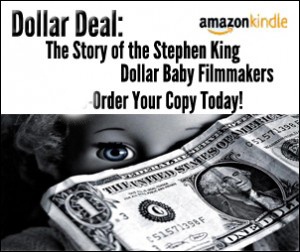“Just the pussy I’ve been looking for.”
Ahoy, dark knights! Aidan here.
Yeah, that’s a quote from a Batman movie, alright.
Excitement for cinematic events is often cyclical. Batman was the biggest thing on earth in 1989, just as huge of a deal as its Nolan-helmed counterparts were twenty years later. Anyone in the entertainment industry who was around for the Caped Crusader’s theatrical debut can attest to how f**king electric it was to cruise down Santa Monica Boulevard and gaze up at that singular, iconic, gold-and-black insignia shining over the city.
Batmania had officially gripped Tinseltown and refused to let go.
Happy Meal tie-ins. A soundtrack by Prince. A trailer that people bought full-price movie tickets to see, and fanboys shaving the iconic bat insignia into their hair. Batman was the most expensive movie ever made at the time, put in the hands of a twenty-something gothic visionary with a scrawny comedic actor in the lead role – careers were riding on this thing, and all of Hollywood held its breath as…
…the movie rocked.
Don’t get me wrong, I don’t love love love Tim Burton’s original Batman by any means, but I recognize and respect what it did for the genre. Much like Marvel’s smash-hit The Avengers, Batman is a big, bold, garish Saturday morning cartoon, but at the opposite end of the spectrum. From its ambiguous time period – including stylized 1940s wardrobe and sleek modern architecture – to impossible gothic spires and inky shadows that bathe the city, Batman is a paradigm of effective cinematic stylization in telling a traditional comic book story.
And yes, that’s even including Prince’s soundtrack and Batman’s first appearance – which is him getting shot and falling down.
The film was a sensation and a sequel was fast-tracked. Burton and Keaton were signed on again, with the stipulation that Burton (who was unhappy with the first film) was given full creative freedom this time around.
And boy, oh boy is Batman Returns a true Tim Burton film.
I respect it more than I like it.
Tim Burton went all-out to weave a macabre fairy tale at the expense of more traditional superhero fare – and while certain of the film’s elements feel flat-out indulgent to the whims of its gothic director, there’s something to be said for an artist’s vision being fully realized onscreen.
Whereas Batman was a half-neutered pastiche of distinctive vision and big-budget Hollywood interference, Batman Returns brandishes a uniquely uncompromising brand of magic. It’s not an entirely authentic Batman film, but Burton’s work on the franchise leaves the distinct impression that he doesn’t care about the character. He’s in love with the notions.
Batman Returns chronicles wintertime in Gotham City – when a corrupt businessman named Max Schreck (Christopher Walken) and the grotesque Penguin (Danny DeVito) plot to take control of Gotham City, only Batman (Michael Keaton) can stop them, while the Catwoman (Michelle Pfeiffer) has her own agenda.
It’s not as convoluted as it sounds. Okay, well, kind of.
Batman Returns is dense with ideas and even denser with characters – it’s a kaleidoscope of super-freaks in a snow-blanketed, crime-ridden cityscape. What it lacks in narrative focus it makes up for in sheer ambiance and dogged fidelity to its universe.
Keaton returns to the titular role, and while his Bruce Wayne is still a genuinely charming and eccentric alter-ego, his Batman is stoic as ever. Burton’s Batman is unique in this way – he’s a true creature of the night, a mysterious shadow-dweller who’s almost emblematic of a monster in a classic Universal flick. When he emerges from the shadows, it’s an event; when he strikes, he is exacting.
And this brings me to people’s main criticism of Batman Returns.
The villains. And how it’s all about them.
I’d have more of a bone to pick with this if I hadn’t already accepted the film’s commitment to a gothic fairytale aesthetic over faithfully adapting the source material; when I watch it objectively as a movie – or even as a Tim Burton Batman movie – the villains are just great.
Danny DeVito’s Penguin is, for me, one of the strangest and most memorable movie villains ever. He’s funny and sad and ruthless and unpredictable and violent and childlike and monstrous in all the perfect ways. Here’s an example of a visionary creative team taking a relatively uninteresting character from the source material and reshaping his mythos to more compellingly propel the narrative – much like David Goyer did with Blade.
Christopher Walken is Christopher Walken, and Michelle Pfeiffer is… well, holy shit. Definitely too much for my five-year-old, Batman-enthused self to handle.
Pfeiffer oozes sex in this role. No, she is sex. She fits the bill for Burton’s twisted Catwoman perfectly, a stitched-up latex-clad vixen whose journey is clear and compelling. She’s equal parts f**king insane and tragically sympathetic, and her transformation from clueless secretary to a freak of the week is one of my favorite comic book movie villain arcs.
Catwoman and Batman’s confrontations mark some of the film’s most entertaining moments. Their final confrontation in the Penguin’s underground sewer lair is a searing, poignantly emotional sequence that packs twice the punch of any modern CGI-filled Marvel orgy.
Batman Returns is a film that’s easier to appreciate than to love. Striking visuals (clown-populated sewer lairs, motorized rubber ducks, machine gun umbrellas, penguins with rockets strapped to their backs) and a massively memorable score don’t mask (and don’t try to mask) the fact that this flick is a hard pill to swallow. It’s jagged, bleak, poetic, and mythical.
Much like how The Dark Knight is a crime epic that happens to take place in Gotham City, Batman Returns is a gothic fairytale that happens to star Batman.
This is one hell of a vision. Revisit Batman Returns.
See you next week for another installment of Movies That Deserve More Love!
Until then… Christopher Walken.





